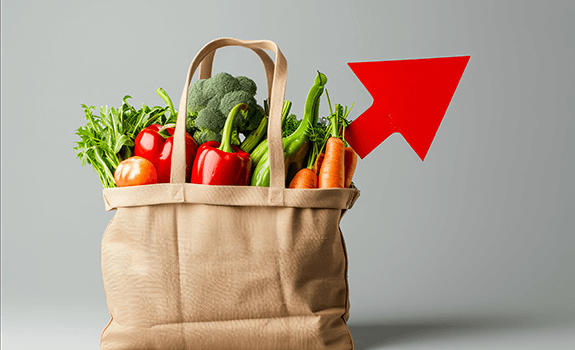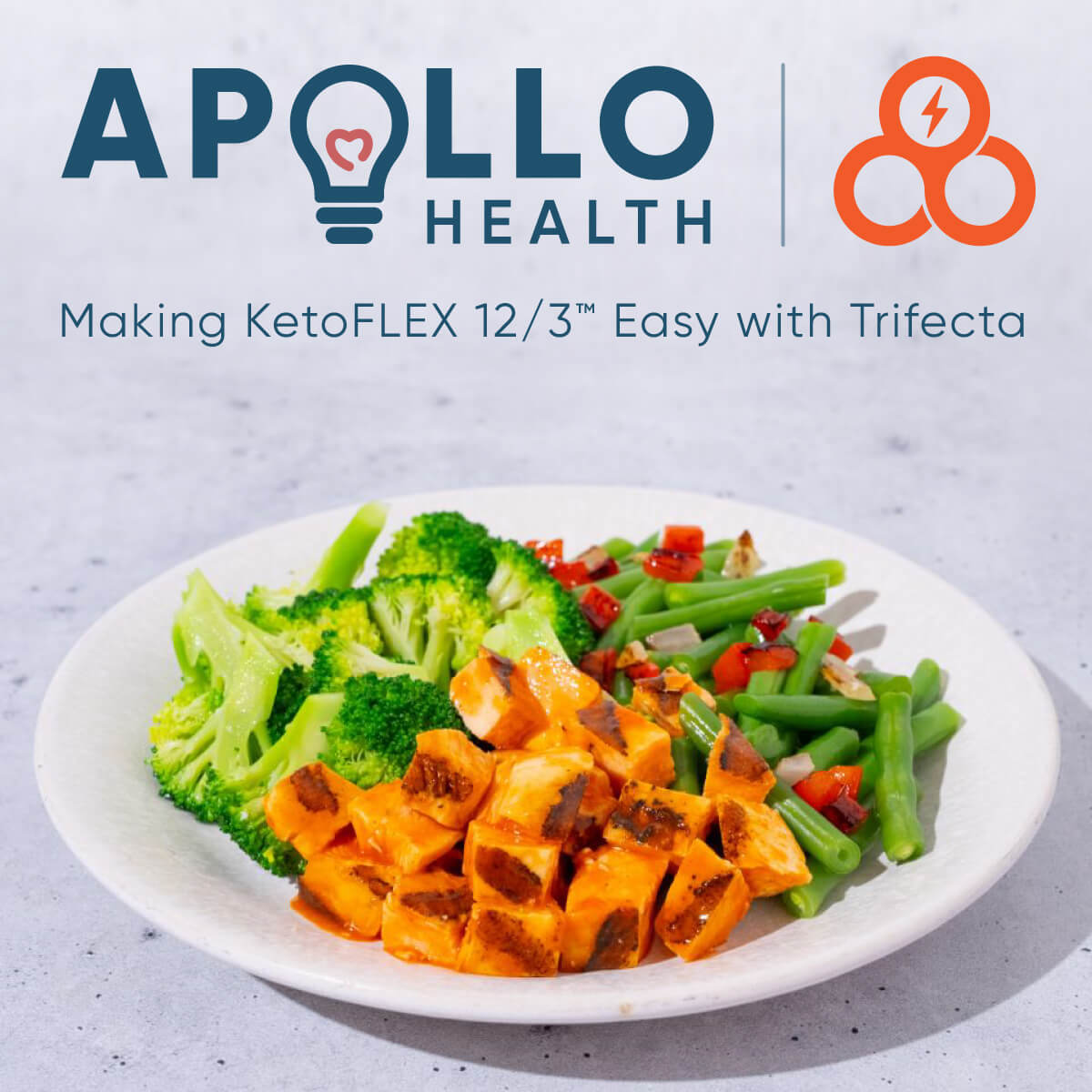August 12, 2024
KetoFLEX 12/3 on a Budget

By Julie Gregory, Chief Health Liaison for Apollo Health
If you’ve been feeling the pinch when it comes to buying groceries, you’re not imagining things. According to the Federal Reserve, food prices have increased by a whopping 25% since the pandemic began. These high prices may lead you to believe that you can’t afford the brain-healthy food recommended on our KetoFLEX 12/3 nutrition plan, but nothing could be further from the truth. There are even ways that you can actually save money (yes, save money!!!) while enjoying the healing benefits of a clean, whole foods diet.
Before diving into our saving strategies, it’s important to have a good handle on the diet. KetoFLEX 12/3 is a plant-rich, nutrient-dense, whole foods diet that emphasizes local, organic, and seasonal non-starchy vegetables from every color of the rainbow, combined with an adequate amount of clean protein and generous amounts of healthy fat. It’s quite different from other keto diets, as outlined in Not Your Daddy’s Keto.
Cost-Saving Strategies
1. Stop purchasing inflammatory foods: Once you fully adopt KetoFLEX 12/3, there are so many foods you’ll no longer be purchasing. By giving up all sugar, simple carbohydrates, conventional dairy, and grains, as outlined in Stop Inflammatory Foods, you can reduce inflammation, heal glycotoxicity, and dramatically reduce your grocery bill. When you add up the combined price of the foods you’ll no longer be purchasing: sugars, syrups, candies, cookies, muffins, cakes, pies, donuts, breads, crackers, pasta, white potatoes (including fries, tater tots, and chips), soft drinks (both regular and diet), drink mixes, puddings, sugary fruits, jellies, fruit juices, conventional milk, cheese, cream cheese, sour cream, sugary yogurts, rye, barley, corn, oats, and rice, you’ll have significantly more jingle in your pocket to spend on foods that will help you to heal.
2. You may need less groceries: After replacing those empty calories with real food, you may find that you eat less and therefore end up purchasing fewer groceries. Indeed, many report feeling less hunger due to blood sugar stabilization and because their body’s nutritional needs are being fully met.
3. Be smart when buying organic: If budget and availability were no problem, it would be ideal to purchase all USDA organic produce. We know that’s rarely the case, which is why we closely follow the Environmental Working Group’s annual announcement of their “Dirty Dozen” (produce that is the highest in pesticides and herbicides) and “Clean Fifteen” (produce that has the lowest amount of pesticides and herbicides). By using their research, we create our own KetoFLEX 12/3 friendly lists by only including the vegetables and fruits that are lower glycemic and are not typically genetically modified. By always purchasing the dirtiest produce, USDA organic, and the clean produce conventionally, you can save a considerable amount of money. See our 2024 lists below.
KetoFLEX 12/3 “Dirty” List (Buy USDA Organic)
• Spinach
• Kale, collard & mustard greens
• Bell & hot peppers
• Green beans
• Zucchini (otherwise GMO)
• Soy (otherwise GMO)
• Beets (otherwise GMO)
• Blueberries
• Strawberries
• Cherries (tart cherries only)
• Apples (tart only, such as Granny Smith, small serving)
• Pears (small serving)
KetoFLEX 12/3 “Clean” List (OK to Purchase Non-USDA Organic)
• Avocados
• Sweet Peas (frozen only, small servings)
• Onions
• Asparagus
• Kiwi (unripened only)
• Cabbage
• Sweet potatoes (small serving)
• Carrots
• Mushrooms
• Green mango
Another cost-saving strategy is to purchase produce at your nearby health food store supplied by local farmers who use chemical-free, sustainable farming practices. These farmers may not have the USDA organic certification, which is often difficult and expensive to obtain, but their produce may be just as clean. Alternatively, you could make an upfront investment in a local farm (whose practices align with our standards) by participating in a CSA, an acronym for community-supported agriculture. This is a type of cooperative in which group members receive weekly shares of food from a farm (or group of farms) in their region. While this can save a significant amount of money, it’s important to be well-informed about what to expect. Read The Pros and Cons of Joining a CSA.
4. Buy clean proteins directly from your local farmer: When animals eat a grain-free diet as close as possible to their natural diet, their eggs, milk, and meat have a healthier nutrient profile and are free from added hormones, steroids, and antibiotics like animals reared in commercial animal feedlot operations called CAFOs. This unhealthy animal protein is found in the vast majority of supermarkets. Indeed, It’s almost impossible to find 100% pastured eggs, poultry, and meat at your local grocery store. Unfortunately, that’s also true for national health food stores like Whole Foods and Sprouts. We’ve found it’s much easier, and often considerably less expensive, to purchase these items directly from farmers near you by using the eatWild website. By purchasing directly from your local farmer, you also have the opportunity to ask questions about how the animals were raised and the diet they consumed. Many farmers even welcome visits so you can see their practices for yourself.
5. Don’t forget Costco and Sam’s Club: These national big box discount chains often sell flash-frozen wild-caught seafood, such as Alaskan sock-eye salmon, Gulf or Ecuadorian shrimp, North Atlantic cod, and Pacific or Alaskan flounder at a bargain price because they are sold in bulk. The fish filets are cleaned, de-boned, and individually portioned, making them easy to thaw as needed. Read the label. If there are any added chemicals, such as sodium tripolyphosphate (STP) (a chemical that helps the seafood retain water and can increase its weight), do not purchase it. In large quantities, STP is a known neurotoxin and registered pesticide in the state of California. (Walmart is notorious for adding STP to seafood!) All of your fresh or frozen seafood should have a single ingredient, the seafood itself, with zero added chemicals.
You can also find discounted pricing on A2 cheeses, such as manchego and Parmigiano-Reggiano, as well as 100% pastured (grass-fed) beef and lamb at many Costco and Sam’s Club locations. (Always avoid organic meat and poultry, even if it’s also labeled grass-fed or pastured, because it’s always been fed grains.)
6. Consider our KetoFLEX 12/3 meal delivery service: There are considerable savings when you purchase our chef-prepared delicious meals from Trifecta. You’re no longer driving from place to place to source clean ingredients or spending hours cooking from scratch. Many find them really helpful when they’re first starting the diet to learn correct proportions and to get meal ideas for when you’re ready to cook on your own. Pause or cancel your subscription at any time. As a new customer, you can take 50% off your first order by using APOLLO50 at checkout.




